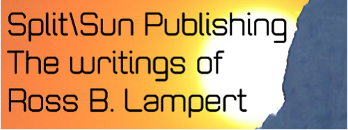I’ve written about beginnings in the last couple of posts. For the next couple, I’ll discuss the endings of sections or scenes, chapters, and the entire piece. I’ll look at the first two here.
Articles and short stories are often divided into sections or scenes, sometimes even into chapters. Books of all kinds are almost always divided into chapters, and those chapters often have scenes within them.
Why would a chapter, article, or short story be divided into scenes? In fiction, scenes contain the action in a specific time and place, from a particular point of view, or focused on a certain character...
Read More

Recent Comments